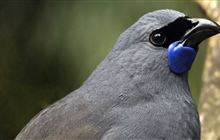Predator control challenges with mega mast
Archived content: This media release was accurate on the date of publication.
Introduction
This year's unprecedented 'mega mast' is making predator control more challenging than ever.Date: 06 August 2019
This year's unprecedented ‘mega mast' is providing abundant food for rats making predator control more challenging than ever, says DOC's Tiakina Ngā Manu Programme Manager, Peter Morton.
DOC has completed three out of more than 20 aerial 1080 operations planned across New Zealand and recent monitoring of the Cobb area in Kahurangi National Park shows more rats surviving than was hoped, at nearly 20% rat survival.
DOC's Tiakina Ngā Manu predator control programme uses aerially applied 1080 toxin and large-scale trapping to protect native birds, bats, frogs, lizards and giant land snails at the most important sites across the country.
“The biggest beech mast for more than 40 years is underway in South Island forests and the exceptional amount of seed means rats don't need to travel far for food and their home ranges have shrunk,“ says Peter Morton.
“It also means any gaps in bait coverage is leaving pockets of rodents that are not exposed to the bait.
“Despite killing an estimated 80% of rats in the Cobb area, the surviving rats will continue to breed and increase in numbers until the seed germinates or rots in spring.
“We will have also killed possums and stoats in this operation, but we were aiming to knock down at least 95% of rats to best protect our vulnerable native species such as tuke/rock wren and Powelliphanta snails.“
The Department is reassessing predator control for the rest of Kahurangi National Park, of which the Cobb block is just one fifth, and is planning to apply 1080 bait more intensively over a smaller area of the park than originally mooted to better protect high priority areas.
DOC's technical advisory team has also revised bait application for the next three scheduled predator control operations at Arthurs Pass, Clinton Eglinton and Te Maruia to ensure more even bait spread at an increased rate of 2 kg per hectare, up from 1.5 kg.
“These adjustments aim for a complete bait coverage to reach all rodents given the elevated levels. Once we have the results from these operations, we will evaluate and adjust our approach as necessary,“ says Peter Morton.
This more thorough 1080 bait application has a high chance of success but will increase costs and flying time and require longer periods of fine weather to complete operations.
“DOC is continually working to improve its predator control operations through monitoring and review to achieve the best results possible. We knew we were facing an exceptional challenge this year so started monitoring earlier than usual to find out quickly if this mega mast might require new approaches to bait application.
“It is vital these predator control operations are successful if we are to avoid losing local populations of vulnerable native species including tree-hole nesting kākāriki karaka/orange-fronted parakeet and mohua, and bats, which are so vulnerable to rat plagues,“ says Peter Morton.
Background information
- DOC's Tiakina Ngā Manu predator control programme, previously known as Battle for our Birds, uses aerially applied 1080 toxin and large-scale trapping to sustain the most vulnerable populations of kiwi, kākā, kōkako, kea, whio/blue duck, mohua/yellowhead, kākāraki/orange-fronted parakeet, rock wren/tuke, long and short tailed bats/pekapeka, native frogs and Powelliphanta snails.
- This 2019/20 predator control programme is DOC's largest-ever, at a cost of $38 million, to suppress rats, stoats and possums over about one million hectares or 12 per cent of conservation land. The programme includes more than 66,000 ha of trapping with the remainder (more than 900,000 ha) aerial 1080 operations.
- Aerially applied 1080 is the only tool currently available that can effectively knock down rodents over large areas before they reach plague levels after a beech mast. Numerous studies show that it protects vulnerable wildlife and allows birds to produce more chicks to sustain and build their populations.
- Budget 2018 provided new funding of $81.2 million over four years to enable DOC to scale up its predator control programme, which has enabled DOC to respond to the threat posed by the mega mast.
Contact
For media enquiries contact:
Email: media@doc.govt.nz

